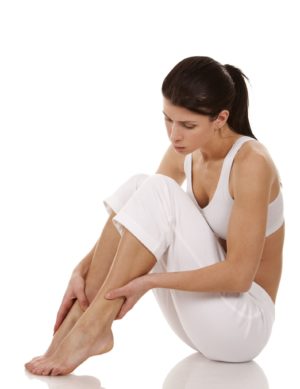 A foot cramp happens when a muscle in your foot suddenly contracts and can’t relax. Minor cramps can leave you with muscle tightness or discomfort, while more extreme cramps can be downright painful. Although they are usually harmless in the long run, if you can prevent them from happening, you can avoid these short outbursts of pain. So below, we take a closer look at how you can prevent and treat foot cramps.
A foot cramp happens when a muscle in your foot suddenly contracts and can’t relax. Minor cramps can leave you with muscle tightness or discomfort, while more extreme cramps can be downright painful. Although they are usually harmless in the long run, if you can prevent them from happening, you can avoid these short outbursts of pain. So below, we take a closer look at how you can prevent and treat foot cramps.
Stopping A Foot Cramp In Its Tracks
We’ll explain how you can prevent a foot cramp from developing in the first place, but first we’ll explain what to do if you feel a cramp coming on or you’re in the midst of a painful foot cramp. Tips to help placate a foot cramp include:
- If you’re seated or lying down, stand up and put some weight on your cramping foot.
- Try to gently stretch your foot by flexing it until the pain subsides.
- Rub your foot as you stretch it.
- For longer cramps, try to put ice or heat on the area. Soaking your foot in warm water also helps.
- Take an over the counter pain reliever for any lingering pain.
Preventing Foot Cramps
As is the case with most health conditions, prevention is preferred to treatment, so how can you best prevent a foot cramp from developing in the first place? Here’s how:
Hydrate – Your muscles are more likely to involuntarily contract if they are dehydrated, so make sure that you are getting enough water throughout the day.
Stretch – Warming up before exercise or activity is another great way to prevent cramps. Stretching slowly helps your muscles transition from an inactive to an active state, and this can help prevent them from forceful and intense contractions.
Healthy Diet – Calcium, potassium and magnesium are all essential nutrients that can ward off foot cramps, so make sure you are getting plenty from your diet. A banana is a great source of the above nutrients, so consider eating a banana before exercise or activities that may lead to foot cramps.
Comfy Shoes – If your feet are in odd positions or overstressed throughout the day because you’re wearing uncomfortable footwear, the muscles may become fatigued and more prone to cramping. Try to put comfort ahead of fashion when picking out a footwear option.
Medication Management – Finally, side effects of some medications may include cramps, so talk to your doctor about switching medications if you’re suffering from recurring foot cramps.
For more information, or to get individualized advice for treating cramps from a foot specialist, reach out to Dr. Silverman’s office today.